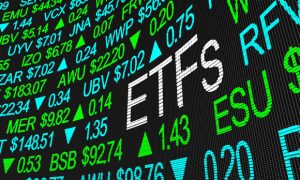Commodity exchange-traded funds see large net inflows this year
Exchange-traded funds, or ETFs, are sometimes punted as an alternative to direct investments on metals exchanges, like the LME or CME.
But in reality, it is a different kind of investor who buys ETFs, even if they are largely buying into the same metal story.
Stay up to date on MetalMiner with weekly updates – without the sales pitch. Sign up now.
ETF investors and looking ahead

ETF investors are often longer-term investors wanting to buy into a trend rather than take a short-term position. More retail or private investors buy ETFs, seeing themselves as investors rather than speculators (if that distinction is a fair one).
But as a recent article in the Financial Times suggests, ETF investors are facing a similar question to trade or hedge fund speculators in estimating how long this run in price rises has to go. Furthermore, they are also facing the question of whether it is part of a much longer-term supercycle or a shorter-term supply chain restocking – pandemic bounce-back recovery.
The supercycle narrative is based on the transition to a new clean energy landscape and the demand that new, low-emission technologies will generate for certain metals like cobalt, nickel, copper and aluminum.
A similar narrative is driving agricultural ETFs. Climate change will create more challenging conditions for farmers and increase the likelihood of poor harvests. In turn, that would usher in decades of higher prices for agricultural products.
Here, we are more focused on the prospects of base metals. Their direction is clear, but the pace of change remains highly uncertain.
Flipping the switch
The suggestion that any major economy will be able to sustain a switch to electric vehicles — either completely, in the case of the U.K., or 50%, as in the case of the U.S., by 2030 is looking increasingly unlikely.
Car manufacturers could achieve the switch, but the infrastructure to support such a massive change is just not there. That includes charging points or the transmission system or sufficient renewable electrical power generation.
In addition, if the power source is not zero carbon — in the form of nuclear, hydro or renewable wind/solar — then what would be the point of the switch to EVs? It would actually be counterproductive.
The Sunday Times reported regulations submitted to the World Trade Organization suggest home and workplace chargers would not operate between 8-11 a.m., or 4-10 p.m. for fear that utility transmission systems would be overloaded.
With such a backdrop, are ETF investors being too optimistic in buying into the electrification story? Of course, proponents would argue the investment has to step up. That alone will drive demand, and hence cause higher prices. However, equally, politicians could backpedal on targets.
If ETF investors can be identified by their greater willingness to invest for the medium-longer term, they may have their patience tested. If the short-term supply chain restocking/global logistics induced bounce in prices begins to wane next year, 2022 may be too early for demand from electrification to take over and continue to drive prices yet higher.
More MetalMiner is available on LinkedIn.


Leave a Reply